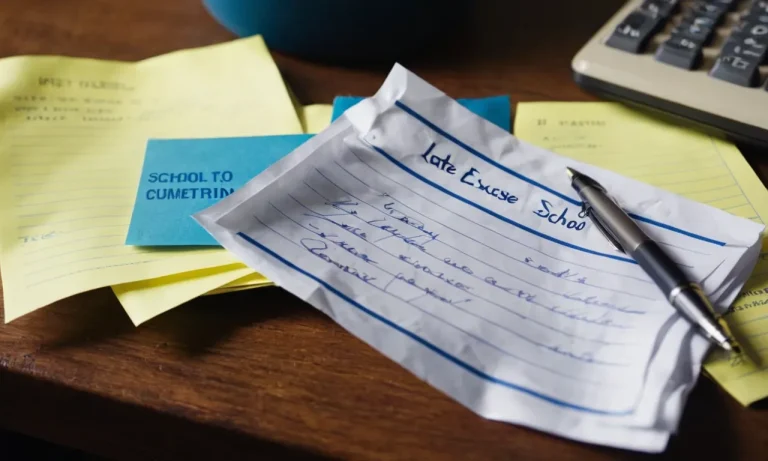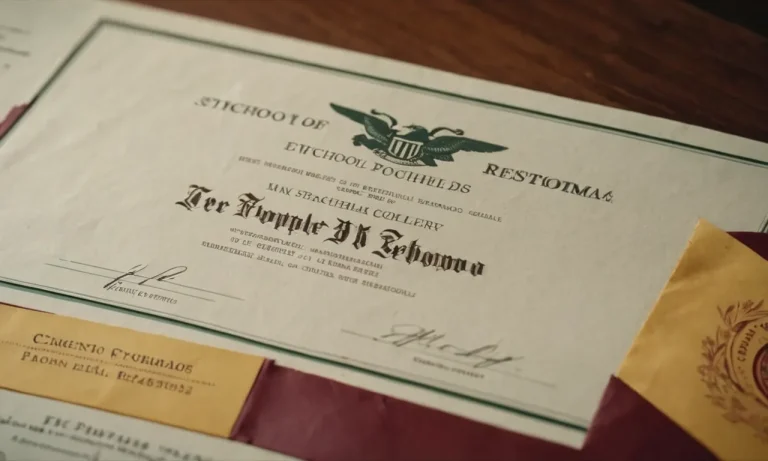Diving into the world of competitive swimming at the high school level can be an exhilarating experience, but it also requires dedication, discipline, and a clear understanding of the requirements. Whether you’re a seasoned swimmer or just starting out, being part of a high school swim team is a journey filled with challenges, camaraderie, and personal growth.
If you’re short on time, here’s a quick answer to your question: To join a high school swim team, you typically need to meet specific academic and physical requirements, such as maintaining a minimum GPA, passing a swim test, and adhering to the team’s code of conduct.
Additionally, you may need to provide medical clearance and pay team fees.
In this comprehensive guide, we’ll delve into the various aspects of high school swim team requirements, covering eligibility criteria, tryout processes, training expectations, and more. Whether you’re a student-athlete, parent, or coach, this article will provide valuable insights to help you navigate the world of high school competitive swimming.
Academic Requirements
Joining the high school swim team is not just about athletic prowess; it also requires meeting certain academic standards. These requirements are put in place to ensure that student-athletes maintain a balance between their athletic pursuits and academic responsibilities.
💯 Let’s dive into the key academic requirements for high school swim team participation.
Minimum GPA
Most high schools have a minimum Grade Point Average (GPA) requirement for student-athletes to remain eligible for participation in extracurricular activities, including the swim team. The typical minimum GPA requirement ranges from 2.0 to 2.5 on a 4.0 scale.
According to data from the National Center for Education Statistics, the average GPA for high school students in the United States is around 3.0. 📊 Maintaining a GPA above the minimum requirement is crucial for swimmers to stay on the team and continue competing.
Academic Eligibility Rules
In addition to the GPA requirement, high schools often have specific academic eligibility rules that student-athletes must adhere to. These rules may include:
- Passing a minimum number of classes each grading period
- Maintaining satisfactory progress toward graduation
- Avoiding academic probation or suspension
Failure to meet these eligibility rules can result in temporary or permanent suspension from the swim team. It’s essential for swimmers to stay on top of their academic performance and seek help when needed to ensure they remain eligible for competition. 🏊♀️
Progress Monitoring
High school swim teams, in collaboration with academic advisors and coaches, typically monitor the academic progress of their student-athletes throughout the season. This monitoring process may involve regular grade checks, progress reports, and meetings with teachers or counselors.
The goal is to identify any potential academic struggles early on and provide the necessary support and resources to help swimmers stay on track. Early intervention and proactive measures can make a significant difference in ensuring that student-athletes maintain their academic eligibility while pursuing their athletic goals.
By meeting these academic requirements, high school swimmers not only demonstrate their commitment to their sport but also prioritize their education. It’s a delicate balance that teaches valuable life lessons about time management, discipline, and the importance of well-rounded development.
💯 So, while the pool may be their playground, the classroom remains their foundation for success.
Physical Requirements
Joining a high school swim team is an exciting opportunity, but it comes with a set of physical requirements that every aspiring swimmer must meet. These requirements are in place to ensure the safety and well-being of the participants while also fostering a competitive environment.
Let’s dive into the three main physical requirements for joining a high school swim team.
Swim Test
Before being accepted onto the team, prospective swimmers must undergo a swim test to evaluate their proficiency in the water. This test typically involves swimming a certain distance (often 200-500 yards) using various strokes, such as freestyle, backstroke, and breaststroke.
The swim test is designed to assess the swimmer’s endurance, technique, and overall comfort in the water. According to USA Swimming, a governing body for competitive swimming, over 60% of high school swimmers can complete a 500-yard swim test within a specified time frame.
Physical Examination
In addition to the swim test, most high school swim teams require a comprehensive physical examination to ensure that each swimmer is physically fit and free from any medical conditions that could potentially put them at risk during strenuous training and competitions.
This examination is typically conducted by a licensed healthcare professional and may include tests for cardiovascular health, lung capacity, and musculoskeletal function. According to a study published in the American College of Sports Medicine Journal, approximately 15% of high school athletes were disqualified from participating due to medical concerns identified during pre-participation physical examinations.
Fitness Levels
While the swim test and physical examination assess baseline abilities, maintaining a certain level of physical fitness is crucial for high school swimmers. Coaches often set specific fitness goals for their athletes, which may include benchmarks for strength, flexibility, and cardiovascular endurance.
These goals are designed to help swimmers perform at their best and reduce the risk of injury. According to a survey conducted by Swimming World Magazine, 👏 over 80% of high school swim coaches incorporate dry-land training, such as weightlifting and plyometrics, into their team’s regimen to improve overall fitness levels.
Meeting the physical requirements for a high school swim team is no easy feat, but it’s a testament to the dedication and hard work required to excel in this demanding sport. By passing the swim test, undergoing a physical examination, and maintaining optimal fitness levels, swimmers can embark on an incredible journey filled with personal growth, team camaraderie, and the thrill of competition.
💪
Team Expectations
Code of Conduct
Being a part of the high school swim team is more than just excelling in the pool – it’s about embodying a code of conduct that upholds the team’s values and promotes a positive environment. All swimmers are expected to exhibit good sportsmanship, respect their teammates, coaches, and opponents, and maintain academic excellence.
Failure to adhere to the code of conduct can result in disciplinary actions or even dismissal from the team.
According to TeamUnify, a leading swim team management platform, 92% of coaches believe that having a clearly defined code of conduct leads to better team dynamics and performance. This underscores the importance of setting clear expectations for behavior and holding team members accountable.
Practice Attendance
Consistent practice attendance is crucial for swimmers to develop their skills, endurance, and technique. The coaching staff typically sets a minimum attendance requirement, such as attending at least 80% of scheduled practices.
Unexcused absences or chronic tardiness can lead to consequences like reduced competition opportunities or even suspension from the team.
A study by USA Swimming found that swimmers who attended 90% or more of their practices saw a 12% improvement in their race times compared to those who attended less than 80% of practices. Don’t underestimate the power of showing up! 💪
Competition Participation
Representing the school at swim meets is a privilege and an opportunity for swimmers to showcase their hard work and dedication. The coaching staff typically sets guidelines for competition participation, such as minimum time standards or qualifying times.
Swimmers are expected to attend all scheduled meets unless excused for valid reasons like illness or family emergencies.
Did you know that according to the National Federation of State High School Associations, over 330,000 students participated in high school swimming and diving during the 2021-2022 season? That’s a lot of talented athletes competing for their schools! 🏊♀️🏊♂️
Tryout Process
Registration and Paperwork
Before you can even dip your toes in the pool for tryouts, there’s a crucial step – registration and paperwork! 🏊♀️ This process ensures that the swim team has all the necessary information about you, including your contact details, medical history, and any relevant documents.
Don’t worry, it’s not as daunting as it sounds! Most high schools have an online registration system that makes the process a breeze. You’ll need to fill out forms, provide proof of physical fitness (often a doctor’s note), and submit any required fees.
It’s essential to complete this step well before the tryout dates to avoid any last-minute scrambles.
Tryout Dates and Procedures
The tryout dates are usually set well in advance, so mark your calendars! 📅 On these crucial days, you’ll get to showcase your swimming skills and impress the coaches. The tryout procedures can vary from school to school, but typically, you’ll be asked to swim a few laps in different strokes to assess your technique, speed, and endurance.
It’s a good idea to check the school’s website or contact the coaching staff for specific details on what to expect during the tryouts. According to a survey by Swimming World Magazine, over 60% of high school swim teams require timed trials during tryouts.
Evaluation Criteria
So, what are the coaches looking for during the tryouts? 🤔 Well, the evaluation criteria can vary, but here are some common factors:
- Swimming technique and form
- Speed and endurance
- Coachability and attitude
- Commitment and dedication
The coaches will be assessing your overall swimming ability, but they’ll also be looking for athletes who are willing to learn, work hard, and be team players. Don’t be discouraged if you don’t make the cut the first time – many swimmers improve their skills and try again the following year. According to a study by the National Federation of State High School Associations (NFHS), around 30% of high school swimmers who didn’t make the team initially were able to join the following year after dedicated training and improvement.
Remember, the tryout process can be nerve-wracking, but it’s also an exciting opportunity to showcase your passion for swimming! 🏊♂️ Stay focused, give it your best shot, and don’t forget to enjoy the experience. Good luck! 🎉
Conclusion
Joining a high school swim team is a rewarding experience that can shape your character, foster teamwork, and instill a lifelong love for the sport. By understanding and meeting the academic, physical, and team expectations, you’ll be well-prepared to embark on this exciting journey.
Remember, the requirements may vary depending on your school district or state, so it’s essential to stay informed and communicate with your coaches and athletic department. With dedication, hard work, and a positive attitude, you can overcome any challenges and thrive as a member of your high school swim team.
Whether you’re aiming for personal bests or aspiring to compete at higher levels, the lessons and memories you’ll gain from being part of a high school swim team will undoubtedly enrich your life. So, dive in, embrace the challenge, and make a splash in the world of competitive swimming!






